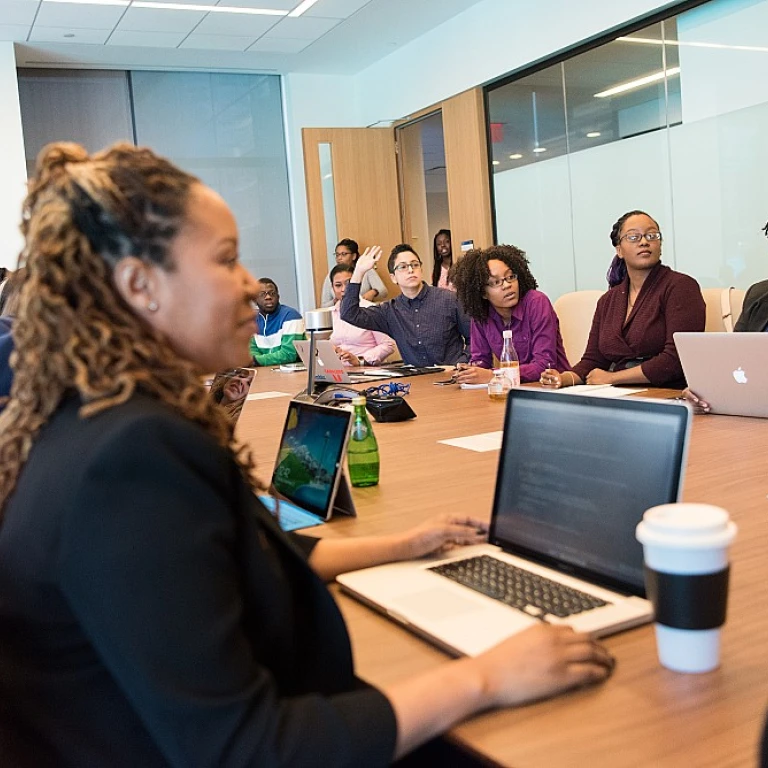
The Basics of Break Laws in Washington
Overview of Washington's Break Laws
Understanding the break laws in Washington is crucial for both employees and employers. These regulations, rooted in state labor laws, ensure that employers provide adequate break times during work hours. Washington state mandates that workers are entitled to certain periods of rest and meal breaks, contingent upon the total hours worked.These rest periods and meal breaks aim to enhance workers' productivity and well-being, ensuring they have the necessary time to recharge during their work period. The law requires that employees receive a paid rest break of at least 10 minutes for every four hours worked. This is imperative in preventing burnout and maintaining a healthy work-life balance for employees.
On the other hand, meal periods differ as they are unpaid, with an allocation of at least 30 minutes during an employee's shift if they work more than five hours in a day. Employers should consider these breaks as a fundamental responsibility and incorporate them into the work schedule efficiently. It's important to note that adherence to these laws not only supports employees' rights but also fosters a positive feedback culture in the workplace.
Significantly, break requirements are a crucial element of labor laws, and compliance helps employers avoid legal pitfalls and enhance employee satisfaction. This understanding is paramount when defining job responsibilities and ensuring that employees know their entitlements and obligations.
For an in-depth understanding, check how employee feedback plays a role in defining job responsibilities and strengthening workplace relations: role of employee feedback in defining job responsibilities.
Impact of Break Laws on Employee Feedback
Role of Break Laws in Shaping Employee Feedback
Understanding the impact of break laws on employee feedback is crucial for both employers and employees in Washington state. Break requirements directly influence workplace satisfaction and overall employee morale, contributing significantly to how employees perceive their work environment. Breaks, defined as paid rest periods or longer unpaid meal breaks, serve as crucial intervals for employees to recharge and maintain productivity throughout their work hours. According to Washington's labor laws, workers are entitled to short, paid rest breaks and longer, unpaid meal periods depending on their work period length. These regulations assure employees that they have official time within their hours worked to rest or have a meal break, which can reduce stress and boost job satisfaction. Moreover, the specificity of break laws can positively affect workers' feedback, as they feel supported by both state protections and their employer's adherence to these laws. This direct correlation between legal break requirements and positive employee feedback highlights why employers must navigate these aspects prudently. Employers who respect the designated rest and meal periods demonstrate their regard for employee well-being and legal compliance, fostering better engagement and loyalty. Recognizing the integral link between break laws and employee sentiment means acknowledging that satisfied employees are more likely to provide constructive, positive feedback, benefiting the employer's overall work culture. To delve deeper into how many breaks are typically allowed, particularly during extended shifts, you may want to explore this detailed how many breaks are allowed during a 12-hour shift guide for specific insights into current work period recommendations and compliance details in Washington state.Challenges in Implementing Break Laws
Common Hurdles in Enforcing Rest and Meal Break Policies
Understanding break laws in Washington is paramount, yet implementing them comes with its own set of challenges. Employers and employees alike must navigate these hurdles to ensure a fair and compliant work environment. One of the most significant challenges involves scheduling and work hours. Employers often struggle to balance operational needs with the legal requirements for rest periods, meal breaks, and overtime. Ensuring that each employee receives their mandated break periods during their hour work is complex, especially in industries requiring continuous coverage, like healthcare and customer service. Another issue is awareness and communication. Labor laws can be intricate, and not all employees or employers are fully informed about break requirements. This lack of awareness can lead to non-compliance, unintentional though it may be, and affect employee morale and feedback negatively. Clear communication of Washington’s break laws between employers and employees is essential for maintaining compliance and fostering a positive work atmosphere. Moreover, the administrative burden of tracking hours worked, implementing meal periods, and recording paid rest breaks often deters strict adherence to labor laws. Employers may find it challenging to accurately document rest and meal breaks, especially in fast-paced working environments, leading to potential discrepancies between reported and actual rest periods. To address these challenges, some employers in Washington state are leveraging technology, hiring dedicated compliance officers, or adopting robust feedback systems to enhance operational transparency. This strategy not only helps in reducing administrative burdens but also aligns employer practices with legal obligations, ultimately strengthening the feedback loop and enhancing employee satisfaction. In conclusion, while enforcement of rest and meal break laws can be demanding, recognizing and addressing these challenges is crucial for both compliance and employee well-being. For further insights on enhancing employee feedback, consider how your business luncheons and other initiatives can bring forth constructive employee input. For additional information, visit https://www.employee-feedback.net/blog/enhancing-employee-feedback-through-effective-business-luncheons.Best Practices for Employers
Proven Strategies for Employers
Navigating the intricacies of Washington's break laws can be challenging for employers aiming to promote a healthy work environment. To ensure compliance while fostering positive employee feedback, consider these best practices:- Educate Your Workforce: It's vital for employers to educate their workforce about the specifics of rest breaks, meal periods, and related labor laws. This understanding empowers employees to manage their rights effectively, leading to a smoother workplace experience.
- Clear Communication: Maintaining open channels of communication helps employees feel heard and reinforces their trust in the employer. Clearly communicate the break requirements and policies during onboarding and periodically thereafter.
- Implement Flexible Break Schedules: Adopting flexible scheduling can help accommodate workers' varied needs while still adhering to legal obligations. Employers might allow for slightly staggered meal breaks or rest periods to ensure optimal productivity and coverage.
- Monitor Compliance: Regular audits or checks ensure that break laws are being followed. This includes verifying that workers receive their full rest breaks and meal periods, and any overtime is correctly managed and compensated.
- Feedback Mechanisms: Incorporating a structured feedback system enables employees to report any concerns regarding break laws. Regularly soliciting and acting upon this feedback can highlight potential issues before they escalate.
Employee Rights and Responsibilities
Understanding Employee Rights within Break Laws
The labor laws in Washington state surrounding breaks and rest periods are designed to benefit both employers and employees by ensuring a harmonious work environment. comprehension of these regulations is imperative for workers to protect their rights and for businesses to comply with break requirements. Firstly, employees are entitled to specific rest breaks and meal periods during their shift, and it is crucial that these are implemented as per the law. Meal breaks, typically referred to as meal periods, are unpaid breaks that allow employees to take time away from work duties. They differ from rest breaks, which are paid and generally shorter in duration than meal breaks. Compliance with these break periods ensures that employees do not work for excessive hours, thereby minimizing burnout and enhancing productivity. According to state laws, workers are entitled to a 30-minute meal break for every five-hour work period. Additionally, paid rest breaks, more commonly known as rest periods, need to be provided at a rate of ten minutes for every four hours worked. Clarity in communication between employers and employees regarding their break rights is essential for effective labor relations. Furthermore, staying informed about rights under Washington break laws empowers workers to advocate for themselves in situations where breaks may not be given according to the local code. If workers find their rights being compromised, they are encouraged to communicate their concerns through appropriate channels within their organization to seek resolution. Navigating employer expectations and personal rights can be challenging; however, with an informed approach, employees can ensure they receive proper rest and meal breaks. As these laws are in place to promote health, well-being, and productivity, adherence will invariably benefit both parties in any workplace setting.Case Studies and Real-Life Examples
Real-World Insights into Break Laws
Understanding how break laws are applied in real-world scenarios can provide valuable insights for both employees and employers. In Washington State, the implementation of break laws has been a subject of discussion and adaptation across various industries. Here are some examples that highlight the practical aspects of these laws:
Manufacturing Sector: Balancing Productivity and Compliance
In the manufacturing sector, where work hours are often long and demanding, ensuring compliance with Washington's break laws can be challenging. Employers in this sector have found that scheduling regular rest breaks and meal periods not only complies with state labor laws but also enhances productivity. By providing paid rest breaks and ensuring that meal breaks are taken, employers have reported a decrease in workplace accidents and an increase in employee satisfaction.
Retail Industry: Adapting to Varied Work Periods
Retail workers often face fluctuating work periods, which can complicate the implementation of break requirements. Some retail employers in Washington have adopted flexible scheduling systems that allow employees to take their rest breaks and meal periods at times that best suit the flow of business. This approach helps in maintaining compliance with break laws while also accommodating the dynamic nature of retail work.
Technology Companies: Emphasizing Employee Well-being
In the tech industry, where work can extend beyond the typical 9-to-5, companies have started to prioritize employee well-being by strictly adhering to break laws. By offering additional paid rest periods and encouraging employees to take their full meal breaks, these companies have seen improvements in creativity and overall job satisfaction. This focus on well-being aligns with the broader trend of enhancing employee feedback mechanisms to foster a positive work environment.
Lessons Learned
These case studies illustrate the importance of understanding and implementing break laws effectively. Employers who prioritize compliance not only adhere to legal requirements but also create a more supportive and productive workplace. For employees, knowing their rights regarding rest breaks and meal periods empowers them to advocate for their well-being, leading to a healthier work-life balance.












